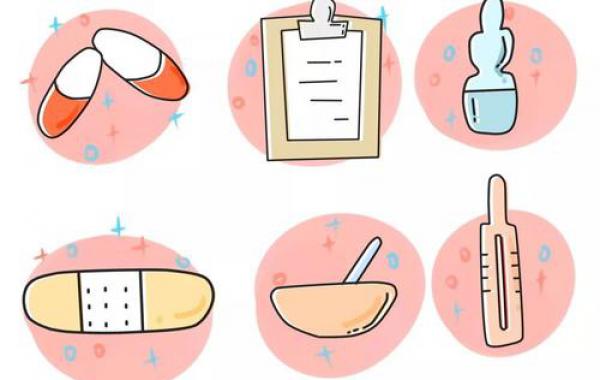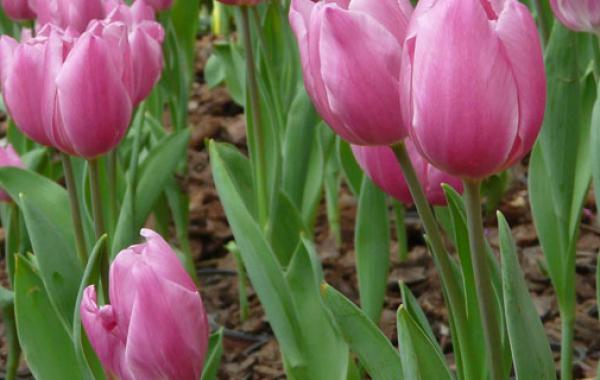How to identify which nutrients flowers lack from their appearance?

How to identify which nutrients flowers lack from their appearance.
There are the following points to identify the lack of nutrients in flowers from their appearance:
First, nitrogen deficiency: the leaves of the plants are yellow or even dry, the leaves are small, and the plants are thin. The stem is thin and broken, and the number of flowers is rare.
Second, phosphorus deficiency: dark green leaves and slow growth. The lower leaves are yellowed between veins, often purplish, especially on the petiole, the leaves are caducous. The flower is small and few, the flower color is not good, the fruit development is poor.
Third, potassium deficiency: there are disease spots in the lower leaves, and dead parts often appear at the tip and edge of the leaves. The yellowing part extends from the edge to the middle, and then the edge part turns brown and shrinks downward, and finally the lower leaves and old leaves fall off.
Fourth, magnesium deficiency: lower leaf yellowing, which often appears in the late stage, yellowing appears between leaf veins, leaf veins are still green, leaf edges reverse upward or downward to form wrinkles, and withered spots often appear between leaf veins in one day.
Fifth, calcium deficiency: the tip and edge of young leaves are rotten, and the tips of young leaves often form hooks. The root system died before the above-mentioned diseases appeared. Terminal buds usually die.
Sixth, iron deficiency: the disease occurs in the new leaf, the leaf vein yellowing, the leaf vein still remains green. Plaques don't appear very often. In severe cases, the leaf margin and leaf tip are dry and sometimes expand inward, forming a larger area, and only the larger leaf veins remain green.
Seventh, manganese deficiency: the disease occurs in the new leaf, the disease spot usually appears, and distributes in the whole leaf surface, the very fine leaf vein still maintains the green, forms the fine reticulation. The flowers are small and bad in color.
What are the commonly used organic fertilizers for potted flowers? How to grow flowers at home and make organic fertilizer.
Organic fertilizer is very good for the growth and development of flowers and plants. in addition to being decomposed by microorganisms and released by nutrients and absorbed by roots, organic fertilizer can also improve soil structure and increase soil water and fertilizer conservation and permeability. There are many kinds of organic fertilizers, which can be divided into two categories: animal organic fertilizer and plant organic fertilizer. The main kinds of organic fertilizers are introduced as follows:
First, barnyard manure: that is, the droppings of livestock, mixed with leftover forage or feed. It contains more nitrogen, but also has a certain amount of phosphorus and potassium.
Second, chicken and duck manure: chicken and duck manure and other poultry manure are the main sources of phosphate fertilizer, which are suitable for all kinds of flowers, especially for ornamental flowers.
Third, plant ash: ash from dead branches and weeds, which contains more potassium, is the main source of potash fertilizer. It belongs to alkaline fertilizer.
Fourth, peanut bran or peanut cake: contains more nitrogen, but also contains phosphorus and potassium. Cleaner than animal droppings.
Fifth, bone meal: is one of the main sources of phosphate fertilizer.
Growing flowers at home, especially in cities, often makes some flower growers feel unable to get organic fertilizer. In fact, as long as we pay attention to the regular timely collection, we can produce organic fertilizer. Such as vegetable leaves, bean shells, melon peel can be put into the jar, covered and sealed, after 2-3 months of fermentation rot is a good fertilizer. After the spoiled soybeans and peanuts are cooked, as well as the viscera and bones of fish, after being fermented and rotted by adding water in a tank, it can also become a high-quality organic fertilizer with high efficiency and high content of nitrogen, phosphorus and potassium. It must be noted that it can only be used after it is rotten.
1 nitrogen deficiency
The leaves of the plants are yellow or even dry, the leaves are small and the plants are thin. The stem is thin and broken, and the number of flowers is rare.
2 phosphorus deficiency
The leaves are dark green and the growth is slow. The lower leaves are yellowed between veins, often purplish, especially on the petiole, the leaves are caducous. The flower is small and few, the flower color is not good, the fruit development is poor.
3 potassium deficiency
There are disease spots in the lower leaves, and dead parts often appear at the tip and edge of the leaves. The yellowing part extends from the edge to the middle, and then the edge part turns brown and shrinks downward, and finally the lower leaves and old leaves fall off.
4 magnesium deficiency
The lower leaves yellowed, and withered spots often appeared in the late stage, and the yellowing appeared between the leaf veins, the veins were still green, and the leaf edges were wrinkled upward or downward, and withered spots often appeared between the veins in one day.
5 calcium deficiency
The tips and edges of young leaves are rotten, and the tips of young leaves often form hooks. The root system died before the above-mentioned diseases appeared. Terminal buds usually die.
6 iron deficiency
The disease occurs in the new leaves, yellowing between the veins, and the veins remain green. Plaques don't appear very often. In severe cases, the leaf margin and leaf tip are dry and sometimes expand inward, forming a larger area, and only the larger leaf veins remain green.
7 manganese deficiency
The disease occurs in the new leaf, the disease spot usually appears, and distributes in the whole leaf surface, the very fine leaf vein still maintains the green, forms the fine reticulation. The flowers are small and bad in color.
Related
- What if the leaves of potted flowers turn yellow?
- Florescence Control of several Flowers
- Anti-freezing technology and post-freezing nursing technology of flowers
- What is the classification of flowers? What are the common methods of flower classification?
- Prevention and control of alkali and acid damage of flowers in courtyard
- Technology of Anti-freezing and restoring growth of Flower seedlings in greenhouse and greenhouse
- How does flower fertilization not hurt the root? Fertilization technology of flowers
- Key points of disinfection in flower greenhouse
- Several pesticides that are banned or used cautiously in flowers
- How to fertilize the flowers that watch the leaves?



